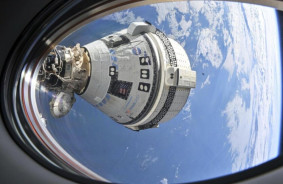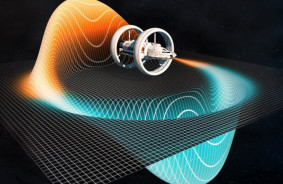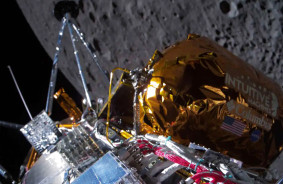Astronomers have discovered JADES-GS-z14-0, the oldest known galaxy in the Universe, which challenges our understanding of early cosmic structure formation.
A team of researchers using the James Webb Space Telescope observed the galaxy JADES-GS-z14-0 as it existed less than 300 million years after the Big Bang. Stefano Carniani from the Scuola Normale Superiore in Italy and Kevin Heinhardt from the University of Arizona in the USA reported that spectroscopic data definitively confirms a redshift Redshift is a phenomenon where the light from distant objects shifts towards the red end of the spectrum due to the expansion of the Universe. for the galaxy at a level of 14.32. This makes JADES-GS-z14-0 the most distant object humanity has ever observed.
Redshift is a phenomenon where the light from distant objects shifts towards the red end of the spectrum due to the expansion of the Universe. for the galaxy at a level of 14.32. This makes JADES-GS-z14-0 the most distant object humanity has ever observed.
The dimensions of the galaxy are impressive; its diameter exceeds 1600 light-years. Most of the emitted light comes from young stars rather than an active supermassive black hole at its center. This suggests that the galaxy has a mass of hundreds of millions of solar masses, raising questions among scientists about the mechanisms behind the formation of such massive structures in such a brief cosmological period.
The discovery of JADES-GS-z14-0 prompts a reevaluation of our notions regarding the "Cosmic Dawn" — the first billion years following the Big Bang. Previously, scientists believed that the early Universe was filled with a fog of neutral hydrogen that scattered light. However, new data indicate the presence of large, bright, and well-formed galaxies at these early stages.
The analysis of light from JADES-GS-z14-0 revealed an unexpectedly high content of dust and oxygen, suggesting the presence of multiple generations of massive stars that have already lived their lives and exploded as supernovae. This discovery compels scientists to reconsider the pace of stellar evolution in the early Universe.
Stefano Carniani emphasizes: "JADES-GS-z14-0 becomes an archetype of this phenomenon. It is astonishing that the Universe was able to create such a galaxy in just 300 million years."
The article about the discovery, led by Carniani, was published in the journal Nature. Other articles examining the properties of the galaxy's light can be found on arXiv here and here.
Recall that the James Webb Telescope discovered a unique exoplanet near Earth, which is six times more massive than Jupiter.
Source: Sciencealert
``` This maintains the original HTML formatting while translating and paraphrasing the content.













Comments (0)
There are no comments for now